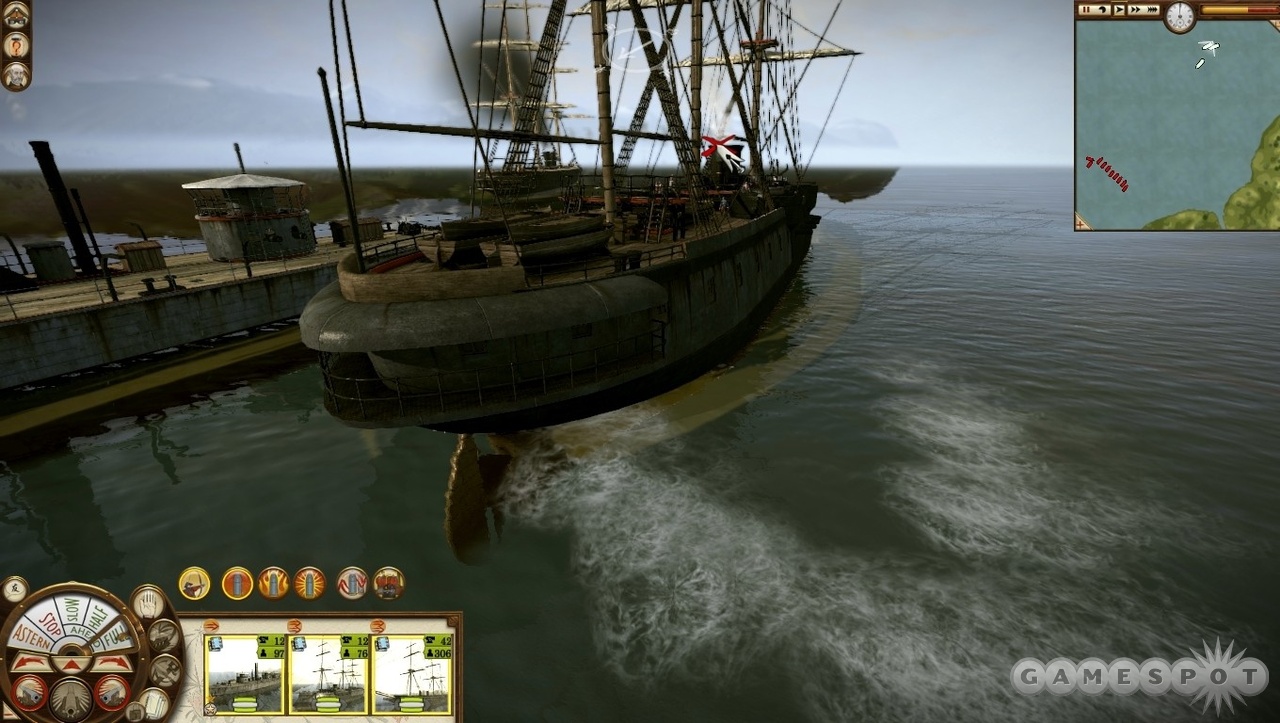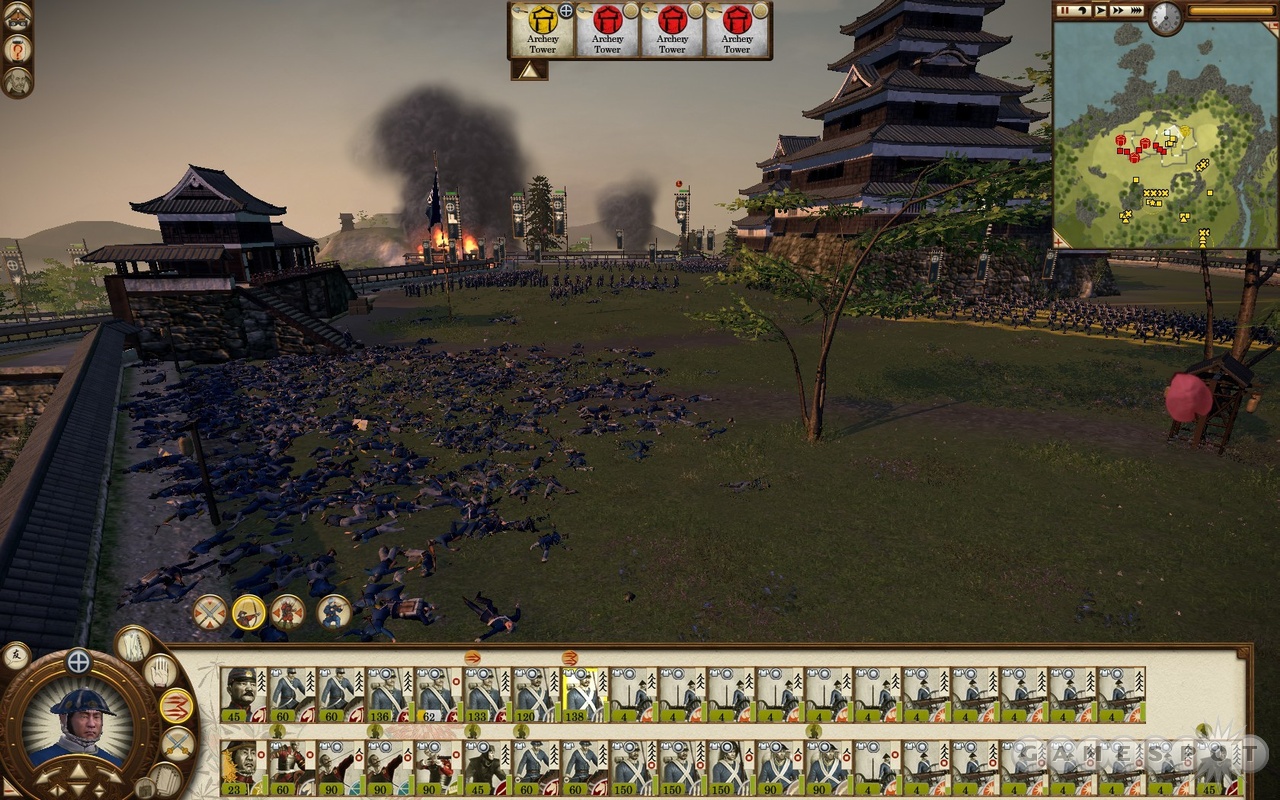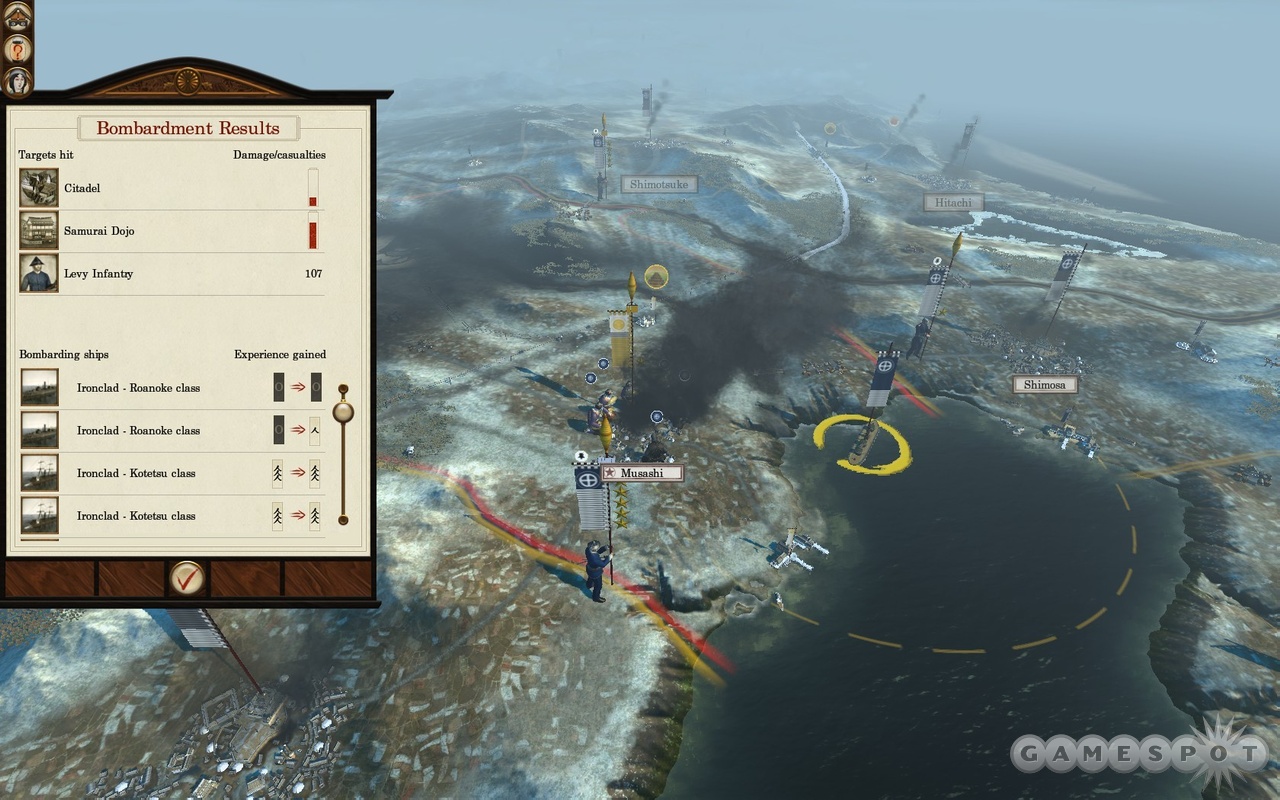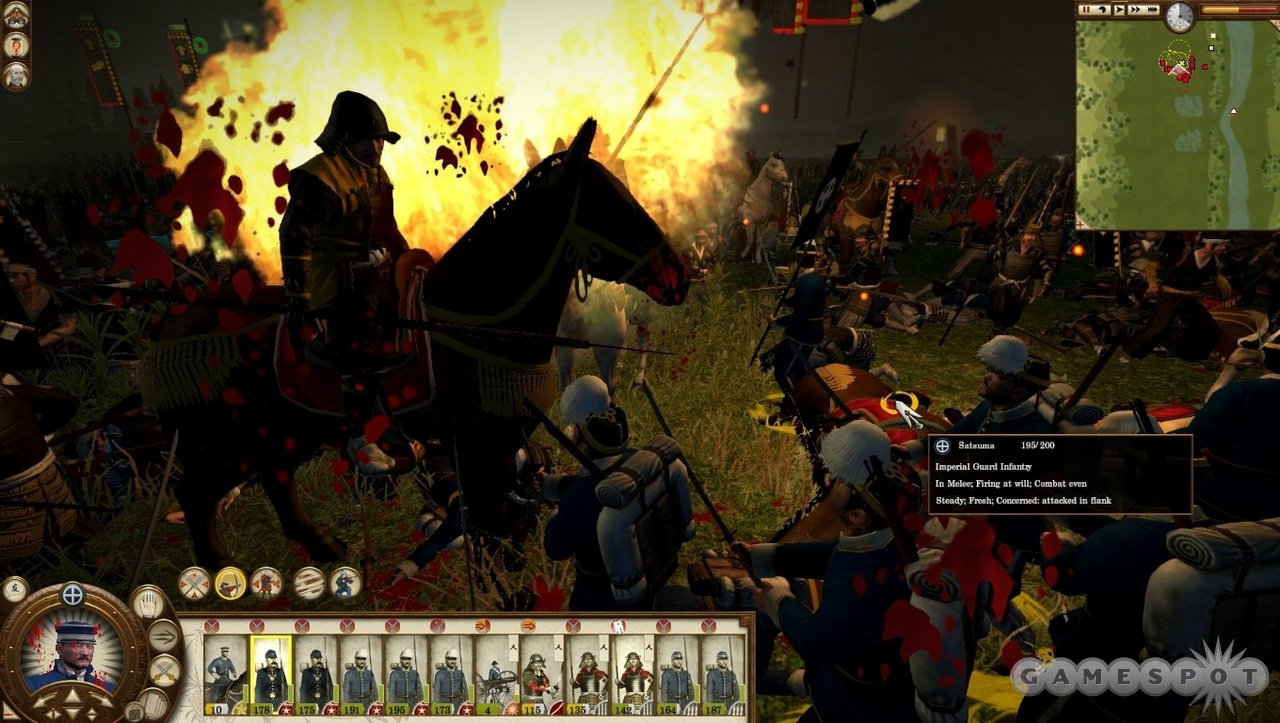Fall of the Samurai, the first stand-alone expansion for Total War: Shogun 2, is set during Japan's Boshin War of the 1860s, a civil war that began as an ideological struggle over the shogunate's pro-Western policies. Clans opposed to these policies fought to overthrow the shogunate and return power to the emperor, and over the course of the war, both sides were compelled to embrace armaments like Armstrong guns and ironclads. The result is a unique setting: a maelstrom of sword-wielding samurai, Gatling guns, railroads, and ancient Buddhist temples. That setting also adds some new dimensions to the series with naval bombardments, railroads, and the ability to take direct control over artillery units. If you wanted to see the Total War series cover more recent conflicts, then Fall of the Samurai is a major step in the right direction. 
While Fall of the Samurai does add plenty of new content, it retains the distinctive traits of the Total War series. For instance, the single-player campaign emulates a handful of real battles from the period, and follows the series' tradition of combining turn-based strategy and real-time battles. The real-time battles focus on crushing your enemies' morale before running them down. Factors like terrain and weather play a large role on the strategic map and in tactical battles. The multiplayer options remain essentially identical to those in Shogun 2. You can play the campaign with a friend or play the Avatar Conquest mode where you improve a persistent avatar through online battles. The result is a game that feels instantly familiar to anyone who has played a Total War title.
The turn-based, strategic portion of the campaign receives the bulk of the improvements over Shogun 2. After picking one of the clans allied to either the shogun or the emperor, you must secure victory for your liege (or yourself, if you feel like fighting for a republic) by conquering enough of the new, and staggeringly immense, map of Japan. The map contains 75 provinces, including Hoakkaido Island, which was absent in Shogun 2. Fall of the Samurai's campaign covers a longer period of time than the Boshin War, but it is still a fairly short era by Total War standards.
The campaign spans only six years, but the turns have been modified to represent shorter increments of time than in Shogun 2. Seasons now last for several turns, and the attrition caused by long winters can force a temporary peace until spring. Special agent units and generals are back to add character to the game, but their skills, retainers, and traits have been changed to reflect the new setting. Familiar agents like the geisha and shinobi are joined by newcomers like foreign military advisers, who can train your troops and increase unit production, and political commissars (Shinsengumi for the shogunate and ishin shishi for the imperials), who can root out dissenters and increase popular support for your faction. Additionally, the AI is more capable of managing agents than before, so keep your generals loyal lest a geisha seduces them into betraying you.

Navies have been significantly improved as well, making them more useful strategically. For the first time in a Total War game, navies are now able to bombard cities and armies, damaging critical buildings and decimating the enemy's forces. Meanwhile, oceanic trade has been revised so that navies no longer have to capture and occupy strategic points to ensure foreign trade. As a result, no one can monopolize foreign trade, but navies can occupy trade routes to siphon off enemy profits. The AI has adapted well to these changes and generally makes more capable use of its navy to bombard your armies, raid your trade, and even pull off significant amphibious invasions.
Much of the campaign's challenge stems from the need to carefully modernize without alienating the people. Certain technologies and buildings can increase your modernization level, which improves your research rate and opens additional research options. However, you have to balance modernization with keeping the populace content (or at least repressed), because people are quick to revolt when their traditional way of life is threatened by these newfangled factories and railroads popping up all over the place.
Special events can help you curry favor with Westerners, often providing you with powerful benefits, but they can also spark an uprising of outraged traditionalists. After the foreign affairs technology is researched, you have the opportunity to allow one Western power to establish a special trading district in one of your cities. While each of the Western powers grants you the ability to build powerful ironclad and marine units, they also grant unique benefits. The British help your navy's bombardment capabilities, the Americans improve the accuracy of your artillery, and the French improve the accuracy of units equipped with firearms.

Unfortunately, one of the most promising benefits of modernization, railroads, is somewhat underwhelming. Admittedly, the ability to quickly ferry armies about is awesome, butrailroads are limited to specific provinces on the main island of Honshu. The central hub of the rail network is Edo (modern-day Tokyo), which just happens to be one of the two cities needed to win the game. So, victory is in your grasp before you can use the railroads to their full potential. Railroads would have been more useful if you could build them anywhere in a method similar to improving road networks in Napoleon: Total War.
The real-time battles haven't changed much from the last game. However, there are some notable improvements. The modern weaponry and the new ability to call in naval fire support during land battles are great additions. You can now take direct control of artillery units from a third-person perspective. This rarely improves the unit's accuracy, but manually controlling a Gatling gun is appropriately cathartic. The navies of the period are now steamships unshackled from the whims of the winds. One particularly outstanding new vessel is the ironclad, which has the devastating ability to ram enemy ships. Unfortunately, the AI hasn't adapted to the changes and has a difficult time storming fortresses and a habit of throwing katana-wielding samurai at Gatling guns. To be fair, this occasionally works if there are enough samurai, but it usually doesn't.
When it comes to multiplayer, one of the coolest things about Fall of the Samurai is that you can play with people who only have Shogun 2. Furthermore, the expansion (and a massive Shogun 2 patch) has added 20 new maps and the ability for each side in a battle to field massive armies of up to 40 units. Additionally, the Avatar Conquest mode has been revamped so that avatars gain skills, units, and retainers appropriate to the more modern setting. The old ways of wooden practice spears and wizened monks have been replaced by modern supply corps and British naval engineers.
Fall of the Samurai looks as great as its predecessor and is full of interesting visual details. For example, experienced British military advisors grow larger mustaches, and master shinobi don masks that give them an almost demonic appearance. Trains travel across provinces that were undeveloped backwaters just a few years before. Furthermore, when you take direct control of an artillery unit, the camera follows the cannonball as it flies through the air toward your target. In addition to interesting details, Fall of the Samurai sports visuals as impressive as any of the other Total War games. In fact, Fall of the Samurai is beautiful whether you are watching moody nighttime battles barely illuminated by units' lanterns, the fiery naval battles, or Republican Guard infantry mowing down spear cavalry with their muzzle-loading rifles. The sound effects are likewise excellent, in keeping with the high standards of the series.
Overall, Fall of the Samurai is an exceptional stand-alone expansion that adds some welcome improvements while retaining everything that made the original game great. In fact, the only major drawback to Fall of the Samurai over Shogun 2 is that the load times are quite long. Fans of the series who want to play with ironclads, railroads, and Gatling guns shouldn't hesitate to pick it up. If, however, you haven't enjoyed the modern thrust of the series from Empire onward, then you should pass on this one.
